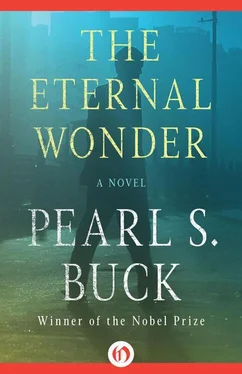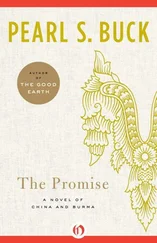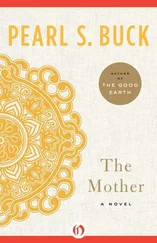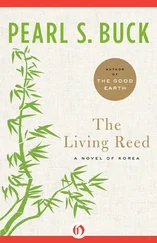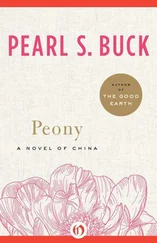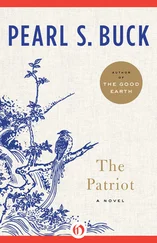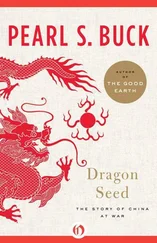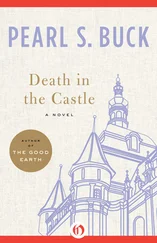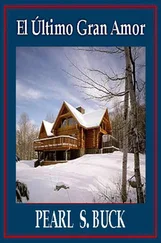Pearl S. Buck

THE ETERNAL WONDER
a novel
Life is the wonder with which we are all infused….
This novel written by my mother, Pearl S. Buck, was one she had been creating in the years before her death at age eighty in Danby, Vermont, on March 6, 1973. Her personal affairs during the final years of her life were chaotic: She had become involved with individuals who targeted her fortune, estranging her from her family, friends, staff, and publishers. She was virtually bankrupt. Her seven adopted children, of whom I am one, did not have access to her property, and the handwritten manuscript and a typed copy of The Eternal Wonder were taken by someone and disappeared for forty years.
After her death my siblings and I mounted an effort to recover what was left of her literary and personal estate, and after a number of years, we were ultimately successful. I became Pearl Buck’s literary executor. However, before the family gained control of her estate, many items, such as her personal papers, letters, manuscripts, and property, vanished. The family was never informed of the existence of her last literary creation. In the years following her death the family recovered other items that had been taken. In 2007 the original manuscript of Pearl Buck’s most famous novel, The Good Earth , was recovered. It had been stolen and hidden by a former secretary at some point in the mid-1960s.
In December 2012 I learned that a woman in Texas had purchased the contents of a Fort Worth public storage unit. The rent on the unit had not been paid up to that point, and under the law the storage company was permitted to auction off the contents. When the purchaser examined the unit she found, among other items, what appeared to be an original handwritten Pearl Buck novel of some three-hundred-plus pages, along with a typewritten copy. The woman wished to sell the manuscripts, and after a negotiation, the family acquired them.
We do not know who took the manuscript from Danby, Vermont; when it was taken; or how it ended up in a storage unit in Fort Worth, Texas.
MY MOTHER WAS BORN TO Absalom and Caroline Sydenstricker in Hillsboro, West Virginia, on June 26, 1892. Her father was a Presbyterian missionary who, with his wife, Caroline, had first gone to China in 1880. They were granted a home leave every ten years and it was on the first, somewhat extended, leave that Pearl was born. In November 1892, the family returned to China. Pearl would return to the United States with her parents in August 1901 for a home leave lasting until August 1902; again for her college years, from 1910 to 1914; and once more from 1925 to 1926 to take a Master of Arts degree at Cornell University. She did not move permanently to the United States until 1934. Thus, for most of the first forty years of her life her home was in China.
She knew the land, the people, and the culture intimately. In 1917 she married John Lossing Buck, an agricultural missionary whose work took him and Pearl to remote parts of China. It was there that Pearl developed a deep awareness of the life of Chinese farmers, their families and their culture. This knowledge was evident in The Good Earth . In 1921 the Bucks moved to Nanjing where both taught at the university.
Pearl knew from childhood that she wanted to be a writer. As a young girl some of her early writing appeared in the Shanghai Mercury, an English-language newspaper. As a student at Randolph-Macon Woman’s College she wrote stories and plays, won writing prizes, and was elected to Phi Beta Kappa.
In the late 1920s she wrote her first novel, East Wind: West Wind . She sent the book to a literary agent in New York City, who sent it to a number of publishers who rejected it, primarily because it was about China. Eventually, in 1929, the president of the John Day Company, Richard J. Walsh, accepted it, publishing it in 1930.
Walsh told her to keep writing. Her next book, published in 1932, was The Good Earth . This story was an instant bestseller and made her famous and financially comfortable. It also led to a romance with Richard Walsh, whom she married in 1935 after her divorce from Lossing Buck, and Walsh’s divorce from his first wife, Ruby. The literary partnership of editor-publisher Walsh and writer Buck was to be an enormously productive and successful one. Until his death in 1960 Walsh edited and published all of Buck’s books.
My adoptive parents, Pearl Buck and Richard Walsh, made their home in Bucks County, Pennsylvania. They also maintained an apartment in New York City, where the John Day Company was located. At the time of their marriage, Pearl had two children: Carol, her severely handicapped birth-child, and an adopted daughter, Janice. Walsh had three adult children from his first marriage who did not live with him.
With a new marriage and home, the Walshes decided to adopt more children. In early 1936 they adopted two baby boys, and fourteen months later an infant boy (me) and a girl. In the early 1950s they would adopt two adolescent girls. The family life was centered on what Pearl named Green Hills Farm, an estate of nearly five hundred acres that comprised a comfortably expanded former farmhouse for the family and several working farms that raised livestock and crops and were run by a manager and workers. At Green Hills Farm Pearl Buck would live and work from 1935 until she moved to Vermont for the last three years of her life.
In November 1938 Buck was awarded the Nobel Prize in Literature. Considered by many to be the highest accolade that a writer can receive, it was awarded for her body of work, which, up to that point, consisted of seven novels and two biographies, plus essays and articles. Many critics felt that Buck, at age forty-six, was too young, and that her work was not “literary” enough—too “readable” and “accessible.”
Despite the critics, the prize confirmed in Buck’s mind that she was an excellent writer, that the envious could be ignored, and that she would just sit down and do what she loved to do—write stories! When her life ended, her body of work consisted of forty-three novels, twenty-eight nonfiction books, 242 short stories, thirty-seven children’s books, eighteen scripts for film and television, several stage and musical plays, 580 articles and essays, and thousands of letters.
I WAS A YEAR AND A HALF OLD when my mother won the Nobel Prize. I don’t remember anything about the excitement my parents must have felt. The only souvenir I have of the event is a tattered postcard she sent me from Sweden after the prize ceremony.
Our home life at Green Hills Farm during the late 1930s and the 1940s was serene, private, and protected. The Japanese war, which had begun with the invasion of far-off Manchuria in September 1931—which was the precursor to Japan’s all-out war against the Chinese and, eventually, the United States—did not impinge on the quiet of rural Pennsylvania. When our country went to war with Japan and Germany in December 1941 those battles were far away. We did have to quit our holiday house on Island Beach, New Jersey, when ships were torpedoed just off the coast and fuel oil from sunken tankers blackened the beaches.
Far from the bombs and battlefields, Pearl Buck was a fierce advocate for military and humanitarian aid for the people and armies of China. Though her country was locked in a life-or-death struggle with the armies of the Japanese empire, she wrote often in her articles of the need to understand that the common people of Japan had been led into a disaster by criminal leaders. Today, in the twenty-first century, the government and people of China honor Pearl Buck for her China relief work during World War II. At the same time her books that are set in Japan speak to the humanity and culture of that nation’s decent people.
Читать дальше
